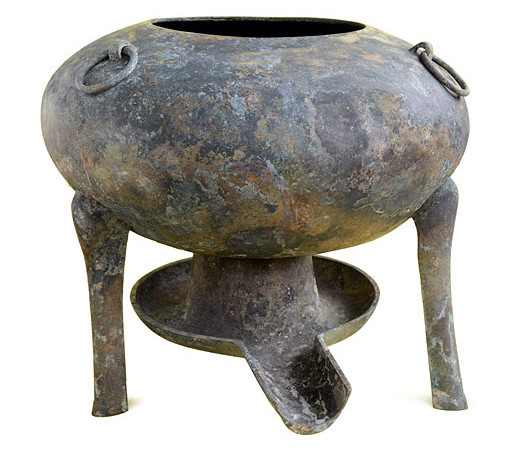This is NEWS Plus Special English.
The discovery of a bronze pot containing chestnuts, unearthed in a 2,000-year-old tomb, may further prove the popularity of China's hotpot cuisine among ancient aristocrats.
The three-legged vessel was found in the tomb of "Haihunhou", or Marquis of Haihun, dating back to the Western Han Dynasty which began in 206 BC. It was identified as a hotpot utensil as a charcoal plate was attached to its bottom to keep the broth simmering while being served.
Charcoal traces and food residue, including chestnuts, indicate that the vessel had been used before it was buried.
The researchers say it is very likely that the tomb's owner was a hotpot enthusiast, so he had his hot pot buried with him. Gold ornaments, jewelry and two chariots have also been found in the tomb.
The researchers say that hotpot dinners are very popular in modern China, but they were rarely seen on the dinner tables of ordinary people 2,000 years ago. Such pots were found only in tombs of the nobles.
The cemetery covers roughly 40,000 square meters of land and contains eight tombs and a chariot burial site. It is the most intact cemetery of the period ever discovered in China.

This is NEWS Plus Special English.
Havana Club, a Cuban rum brand mostly sold in Europe, is now entering the Chinese market.
An executive of the rum company made the announcement at the 33rd Havana International Fair held in Cuba.
Sergio Valdes, business development director of Havana Club International, says the company is taking a specific set of actions targeting the Chinese market.
One of the moves is to forge strategic alliances with La Casa del Habano, a store chain which sells Cuban cigars and other products around the world. Its stores in China would allow Havana Club to reach existing Chinese consumers.
Valdes said China is discovering many new ways to enjoy a drink. Young people are looking for new things, which stand out from traditional products, such as cognac or whisky.
Havana Club rum is the world's 24th most sold alcohol, with 4 million nine-liter cases exported to over 140 countries every year, mostly Britain, France, Germany, Italy and Chile. Eighty percent of its exports are claimed by Europe and another 15 percent by Latin America and Canada.












